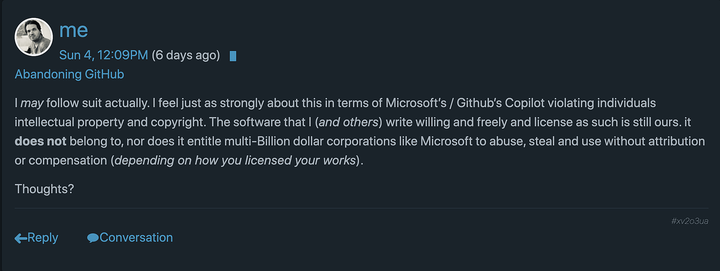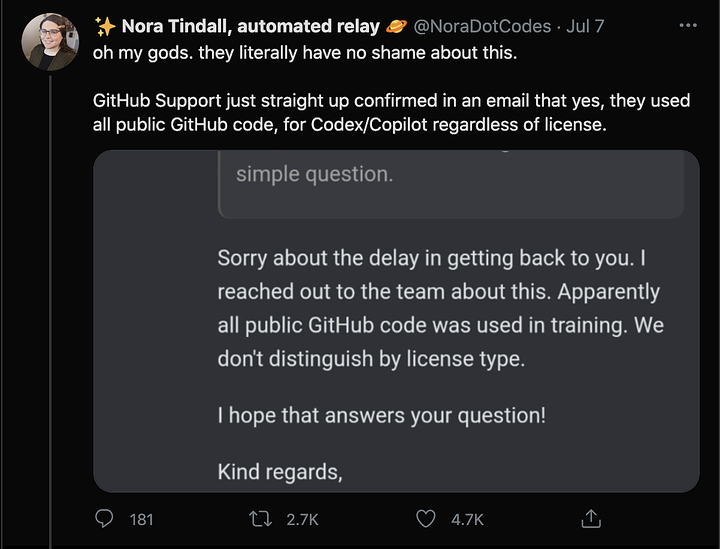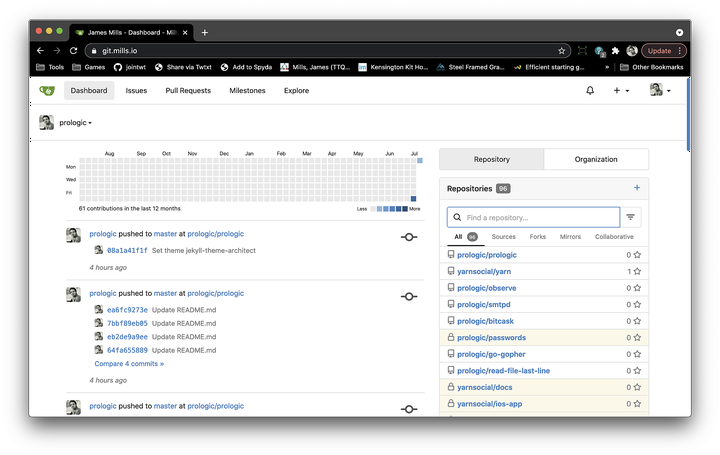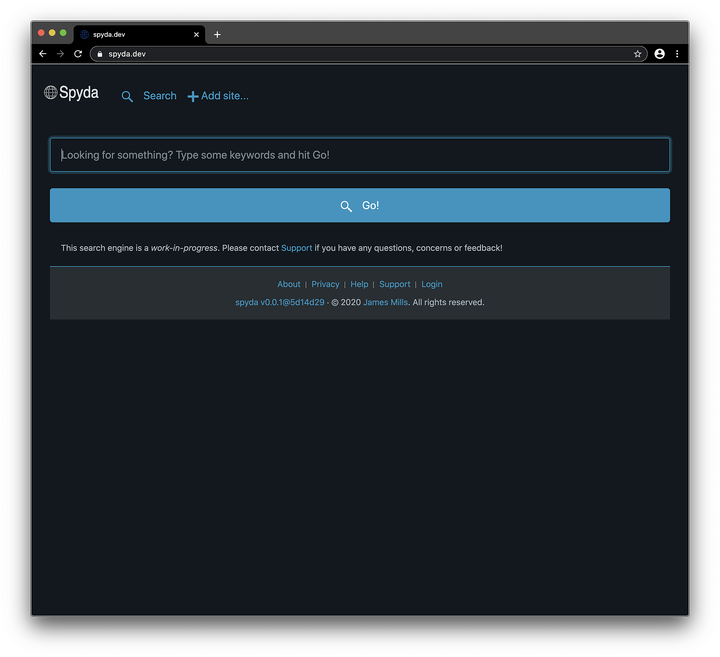Future of Yarn.social
Today I’m going to talk about Yarn.social’s future, a roadmap into where we’re going and thinking. I’ll also write a little about it’s history of where we came from and highlight how Yarn.social is different and in my opinion better.
What?
For those of you new to my blog or Yarn.social; Yarn.social is a decentralised social media platform, a microBlogging platform. It was originally created in July of 2020 and was then called Twt.social – since then it has going through a rebranding and seen huge improvements in the user experience and features that make up the platform.
If you are somewhat familiar or used to Twtter™, Yarn.social has a similar feel, but the key things to note are:
- It is 100% decentralised, there is no single server, entity or organisation in “control”
- There is no metadata collection of any kind or tracking of users
- There are absolutely no advertising
Where?
Today Yarn.social consists of:
- An ever improving backend called
yarndthat powers every single and multi user pod (what we call instances that make up the network) - An ever improving default theme providing a decent user experience for all new pod owner/operators and users
- A new but basic landing page at Yarn.social that has most of the content we need in place
- An updated native Mobile App actively being worked on but that is still in internal development and alpha testing
- A global search engine and crawler that whilst functional still needs some work
- A feed service that supports subscribing to Twitter and RSS/Atom feeds
- 4x multi-user pods and 7 single-user pods
- 415 feeds across the network and general ecosystem which have produced and consumed some whopping ~256,000 Yarns!
When?
Tomorrow it is my hope that we:
- Continue to improve the general user experience of the default web interface’s theme
- Complete the re-development of the native Mobile App and get it published to the App and Play stores
- Redesign the landing page at Yarn.social with a better layout and look
Not literally tomorrow of course 😂 but this is more of an ongoing set of efforts I’d like to see continue as well as some immediate long-over due goals.
In addition to the above, I would really like to get a Not-for-Profit (NFP) organisation setup and created for Yarn.social – Why? I believe Yarn.social and all the work we’ve put into the platform, it’s components, it’s specs and so forth should remain wholly in the hands of the community and in my opinion we should continue to govern ourselves this way. I never intended to create yet another privacy eroding social platform (you know the ones that profit off of user data and metadata and care nothing but user engagement on their centralised platform so drive up advertising revenue).
So over the holidays:
- Seek help in setting up a Not-for-Profit
Or:
- Sit down and work through the required paperwork and just “get it done”
Once this is done we can move on to other things that are in the works and eventual long-term goals such as:
- Getting Yarn.social
yarndinto the Marketplace of Cloud providers such as Vultr and DigitalOcean – The only blocker right now is an official organisation and support structure (hence the need and desire to create a Not-for-Profit above). - Seeking funding from either the community through donations and/or through philanthropy investors so that we can continue to support the development and maintenance of the platform over time.
- Redesigning and developing the Hosted Pods platform as a service to create a level of convenience for new users and new pod owner/operators that either cannot run/host their own pod due to lack of experience or technical adeptness or prefer to have someone else manage the “hosting” and “maintenance”.
- Building a new and more modern sleeker Web Application frontend ala Race-style (but without using any heavy frameworks like React!) – This is a bit controversial (or has been) for some, especially those that enjoy the lightweight ness of the server-side web interface that exists on all pods today. But it becomes difficult to build some types of user experiences this way and it is also hard to maintain a native Mobile App experience that uses a completely different set of technologies, codebase and even programming language! The idea here (and has been already started somewhat) is to build a Progressive Web App / Single Page App that utilises the backend API of
yarndand Mithril JS as well as some good CSS to create a rich, interactive, almost-native app-like experience. This app would be hosted centrally at eitherapp.yarn.socialoryarn.social/appand serve as a front to any pod, it may also be builtin toyarnditself as an optional web interface.
And finally, but most importantly to me:
- Continue the discussion of building and supporting the idea of “Private Feeds” – We’ve talked about the use-cases for this over some months, and whilst this itself may be a lot of work, and there may be other ways to solve similar use-cases, I feel it is important to also build ways in which people are also able to “socialise” and “microBlob” privately.
- Reignite a much older discussion and idea of (what was originally called) “Supervised Pods”, but more recently I’ve thought of this as “Supervised Accounts”. This is the idea that (and something very important to me) that as a Father of two young daughters who will very likely want to get into such things as “social media”, that they should be able to do so BUT not on any of these other privacy eroding garbage that exists out there AND should be protected from predators, bullying, harassment and so forth (things that are in violation of all pod’s default abuse policy anyway and would result in a Pod Admin/Operator just nuking your account).
And so this concludes the general vision and goals of Yarn.social. Over time it is my great hope that the network continues to grow and continues to be cultivated. IT’s hard to put numbers on this because of the decentralised nature of Yarn.social / Twtxt in the first place; but let’s see if we can (over the next year) get to:
- 20+ Yarn.social pods
- 500+ Feeds/Users across the network and ecosystem
- 1M+ produced and consumed Yarns!
How?
Good question! This is a lot of work, it’s already been a lot of work. In only a few short months Yarn.social itself will reach it’s 1st official birthday (2nd if you count the fact it was once called Twt.social).
This can go either one of two ways in my view:
- Yarn.social continues to evolve and improve slowly over time with the help of contributors that donate what little spare time they have (including myself)
Amd/Or:
- I start to wind down my own day job over time so focus more on the things I love. I obviously can’t do this yet as I still need to also support my family.
And/Or:
- A nice philanthropist comes along and donates a sizeable chunk of money to the project because they see the value in what we’re building and then suddenly things go a lot faster! 😂
Why?
Many of the driving factors behind Yarn.social today that were originally talked about in a much older post Why an open, decentralised social media network like Twtxt and Twt.social matter are still true today.
I won’t restate in great detail what is already on the About Yarn.social page, but if I am to sum up everything into a single visionary statement it would be:
To create the best, unobtrusive and unfettered social medial platform to anyone that values their privacy and freedoms.












